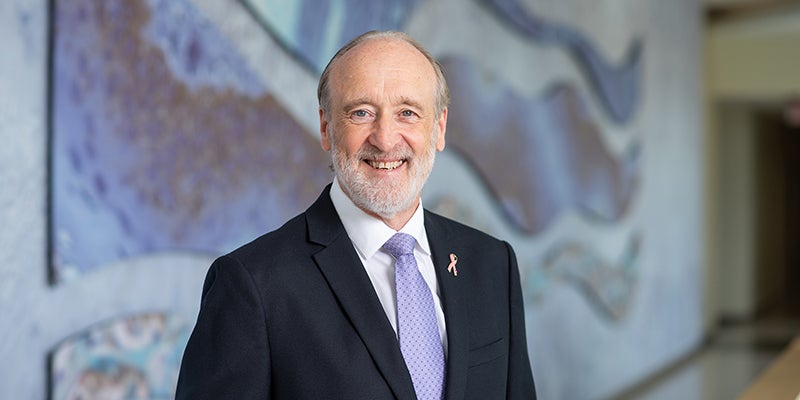His solar system
Published 11:26 am Monday, February 1, 2010
While it can be hard not to notice the turning blades of wind turbines along Interstate 90 east of Austin, solar panels silently converting the sun’s rays to energy often go unnoticed.
With wind energy expanding in the area, solar power may be an overlooked method of producing local energy. Root River Energy is securing land for a community-based wind farm to produce 300 megawatts of energy in Fillmore and Mower counties. Wisconsin Power & Light is nearing the start of construction on a 200 megawatt wind farm in Freeborn County.
Tom Yates said he believes solar energy is being overlooked. One reason, Yates said, is because solar power is not as flashy as wind power, where people can visually see the blades rotating to produce energy.
“I always say wind is sexy, solar isn’t,” said Yates, a union electrician who has worked on wind turbine projects. “I think that’s the reason why it doesn’t sell as well.”
Despite the visual appeal of wind turbines, Yates said wind turbines require far more routine maintenance than solar systems. At least twice a year, a turbine needs to be greased and inspected, otherwise the unit can breakdown, Yates said.
“There’s a lot of mechanical maintenance on them,” Yates said. “Minimum two times a year — spring and fall — you’ve got to do that. People don’t do it, so their system will run until something happens.”
Yates owns solar modules to energize his house and solar panels to heat the water for his house south of Austin on Highway 218. Yates bought his solar units from a company in Glencoe, and he was able to install both the units on his own about three years ago.
Yates said his solar systems have required little maintenance since the units were installed.
“Absolutely zero maintenance,” Yates said. “You can wash panels every once and while, but usually the rain takes care of it.”
Yates said he forgets about his solar panels and will have to routinely check to make sure the systems are operating correctly.
“Sometimes I forget about it and have to come out and make sure it’s running,” Yates said. “It’s silent. It doesn’t do anything. Wind turbines you have maintenance on. Both these, they just sit here and work.”
Yates said there are days when he doesn’t need to take any power from the grid for his house; it all comes from the sun. When he doesn’t use all the energy produced by his solar modules, as the excess energy goes into the power grid through the Freeborn-Mower Co-Op. Yates said he essentially takes the power back at night. His system is hooked to a meter that calculates how much power he uses and puts into the grid. Yates receives a credit for power put into the grid.
1 percent
Along with the solar modules that produce energy, Yates owns solar panels for hot water used in his house.
However, wind and solar energy are still a small part of U.S. energy consumption. Of about 101.545 quadrillion British thermal units of energy consumed in the U.S. in 2007, about 7 percent came from renewable energy — about 6.813 quadrillion Btu, according to data released in April 2009 by the U.S. Energy Information Administration.
Out of that 6.813 quadrillion Btu, about 53 percent came from biomass, 36 percent came from hydroelectric, 5 percent came from wind and 1 percent came from solar.
Even as renewable energy is a commonly debated topic in politics and in the media, Yates said more people were utilizing renewable energy in the 1970s than are today. He bought his first panels in 1978 during a time when he said more people installed small solar panels on their houses.
Solar units today are larger than the systems used in the 1970s, Yates said. While solar panels and modules aren’t cheap, Yates said there are many rebates available for solar and wind technology.
Overall, Yates said his solar system costs less than a new car. He has six, solar 4-by-8 foot panels that cost about $550 each that heat his house. While Yates installed both units himself, the hot water system cost an additional $1,300 for pumps, tanks and other parts.
Yates owns eight 2-by-4 foot panels that he said each produce about 110 watts per hour. He estimated his solar modules cost a total of $6,000. Yates cautioned that the cost of solar modules and panels fluctuates daily with the cost of parts.
Yates said few people utilize solar energy because it’s not something they’re willing to pay for.
“People are willing to go pay $50,000 for a new truck, but they’re not willing to pay $10,000 for a system that’s going to be at their house for the rest of their life,” Yates said.
Setting an example
While his solar panels and modules significantly curb the cost of power, Yates said he owns solar panels and modules because he’s concerned for future generations. Yates said he wants to act as an example to show people how to utilize solar power — energy he said people commonly waste.
Even if a person doesn’t believe in climate change, Larry Dolphin, director of the Hormel Nature Center, said it’s still important to live lightly as the earth’s population increases.
The Hormel Nature Center has used a 1.14-1.3 kilowatt solar photovoltaic for about three years to power the lights in the visitor’s center. Like Yates, Dolphin said he hopes the system serves an example. The nature center is planning an exhibit to teach people about the benefits of solar energy.
“It’s really about setting an example to live more sustainably,” Dolphin said.
Kelly Lady, an energy services consultant with Austin Utilities, said she receives a lot of phone calls about people interested in renewable energy, but most people are turned off by the costs.
“People see renewable energy as a free energy source, which it is. But you have to buy the equipment, and that’s what costs money,” she said.
About four of Austin Utilities customers currently produce renewable energy. Three businesses have solar panels, and one business has a wind turbine.
“I think Austin has a good interest in renewable energy,” Lady said. “I’ve seen other communities that talk about it, but as far as actually getting people to take action, you don’t see a lot of that.”
Other people, like Yates, own systems outside of the city limits and tie their power into the Freeborn-Mower Co-Op.
Lady said they have seen an increase in interest in the last few years as living green has become a more prevalent topic. Austin Utilities offers a program called Solar Choice as a rebate for people who own solar or wind energy systems.
Lady said groups like Austin Utilities often want people to use renewable energy because it minimizes the need to produce additional energy. Renewable energy can prevent the need to build expensive power plants, which would pass on costs to customers.
“The more efficiently we can use what we have, the better off we are; the better off our customers are,” Lady said. “We don’t have to build expensive power plants. They don’t have to pay higher rates to cover the cost of those things.”
Wind
Even though Yates said wind turbines are more difficult to maintain, he bought parts to a turbine and is planning to assemble the wind turbine on his property.
Yates said he doesn’t like seeing turbines that broke down, and the owners neglect to fix them. He said it gives wind energy a bad name. Yates may have a solution to that problem, though. He may teach a class where people will assemble the parts to a wind turbine then take it apart. The people in the class could then reassemble their turbine on their property and know how to maintain it, Yates said.




